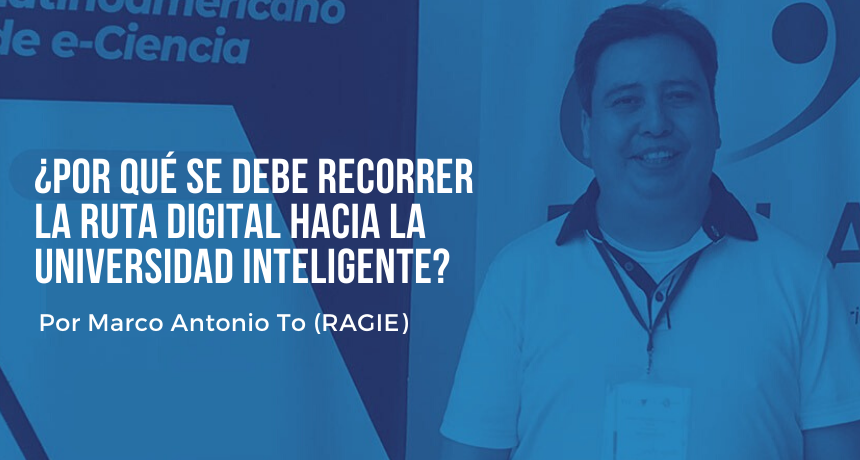The digital route is understood as the steps that a university takes to be able to reach a complete transformation in its Information and Communication Technology (ICT) services, for the benefit and improvement of all the users that make up the contemporary university. This allows us to be better prepared for fast changes foster by new generations or, as has happened in 2020, due to extreme emergencies.
How does the university trace that route? The route must be created from a complete vision of the needs of all the university communities, in this way we will know in detail which technological solutions will have the greatest impact, which will also lead to a better performance of our budget. This route must be created by the highest levels of the university and not only by the ICT Department. If the highest authorities do not agree with the route, it will never become real. Furthermore, the university authorities know with certainty the institutional vision, where the ICT departments must align all their strategic objectives with it, in such a way that the implementation of new policies, standards and guidelines will be done in a more fluid way.
Once we have defined the vision and the approval of the university authorities, we must stop for a moment and take “time out” from the daily routine and dedicate time to start a deep dialogue between all the communities that make up the university. There they will be able to identify all the needs and problems that currently exist in their institutions, where there is a great probability that many of the needs of each community are common to each other. In addition, they will be able to explain to these communities where the institution is headed and how technological solutions are now a main pillar of the operation of the university.
Each university has its characteristics and needs, but the dynamism and flexibility of its digital services is essential today. If we think that our end users are all students, professors, researchers, administrative staff, etc., we must create a complete ecosystem, where each system that the university uses is interoperable and transparent for its users. Universities can become so large and complex that efforts are often doubled or tripled, reducing the resources of the institutions. In addition, on several occasions, communication between internal communities and those who implement technological solutions is very poor, creating inoperable or low-use systems.
Today there are hundreds of technological solutions for academic institutions, but we will only know which is the most suitable for our institution, if we define well the route to that Smart University. What is a Smart University? In short, it is a university that has completely transformed the digital world and that will be able to overcome any challenge in the future using next-generation technologies, but above all that each of these technologies work together, as part of a large institutional digital ecosystem at the service of all the internal communities of the university.
Marco Antonio To is an Engineer in Electronics, Informatics and Computer Sciences, with a Postgraduate degree in Computer Networks from the Francisco Marroquín University. He has a Master's degree in Telecommunications Management from Oklahoma State University. In addition, a PhD in Information Technology from the Paris Saclay and Galileo Universities.
With more than 20 years of experience in areas related to computer science and telecommunications in high-level academic institutions and the ICT infrastructure industry. He is currently Director of the Master's and Doctorate programs in IT at the University of Galileo and President of organizations such as the Guatemalan Advanced Network for Research and Education (RAGIE) and the first Traffic Exchange Point in Guatemala (IXP-GT) .







